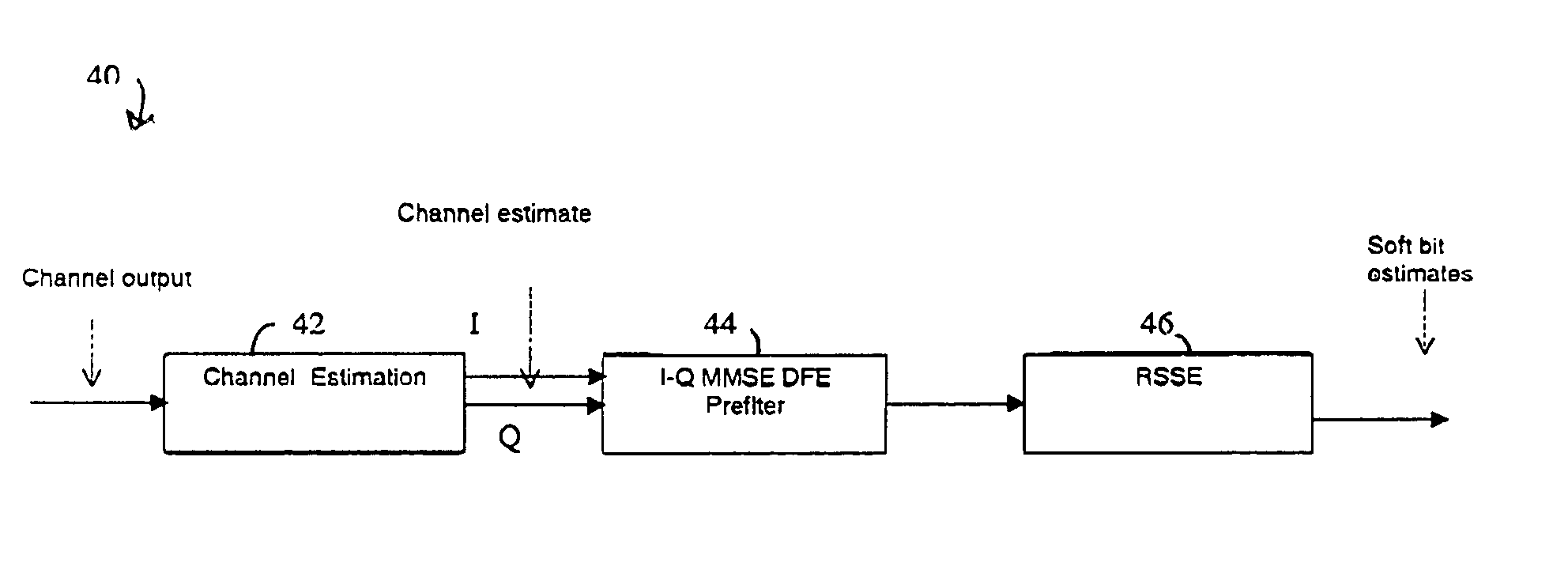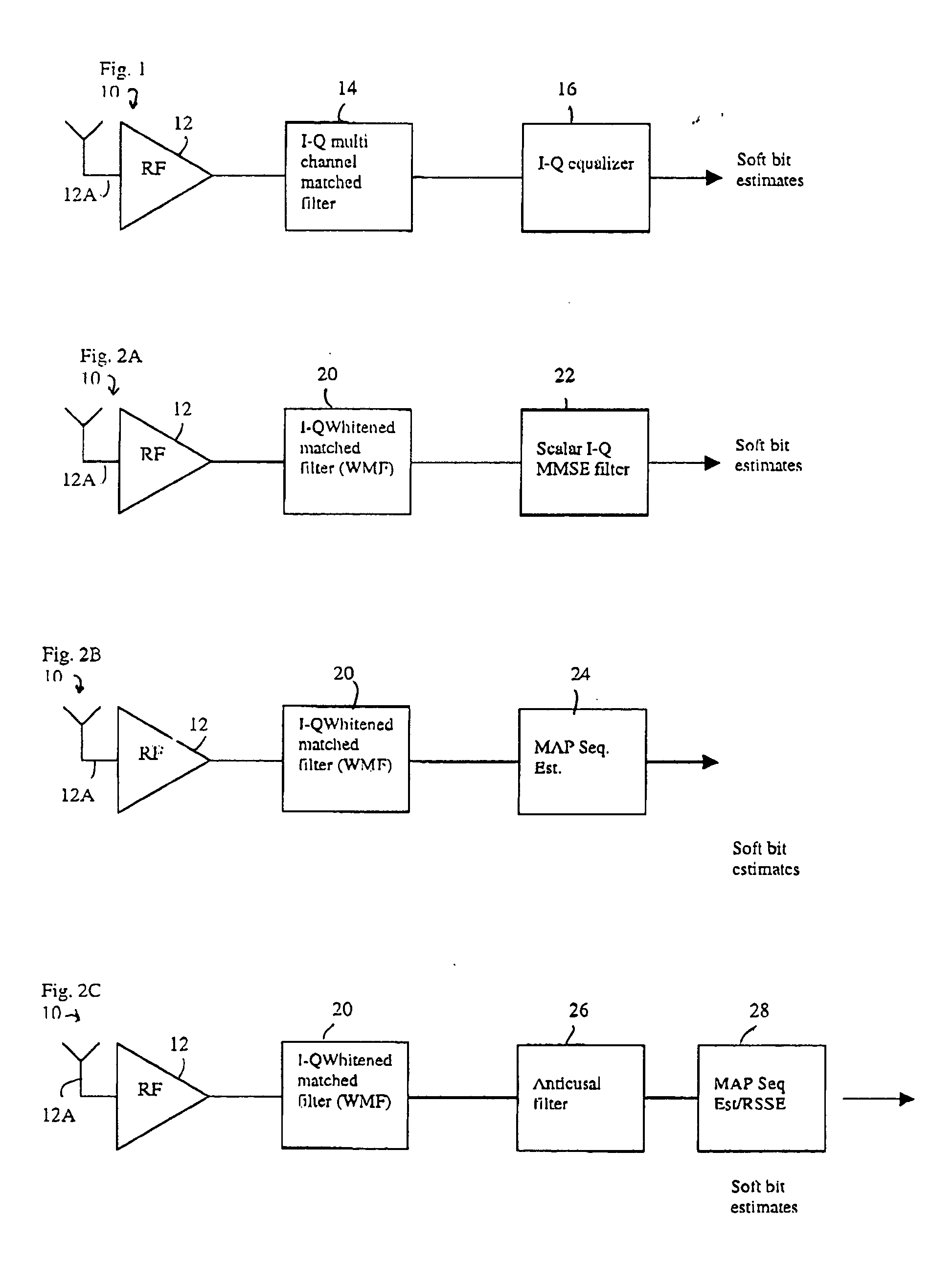Method and apparatus providing low complexity equalization and interference suppression for SAIC GSM/EDGE receiver
a gsm/edge receiver, low-complex technology, applied in the direction of amplitude demodulation, line-faults/interference reduction, baseband system details, etc., can solve the problems of high interference level, co-channel interference, increase the interference and bandwidth usage, etc., to improve the ability of interference rejection of adjacent channels, improve the efficiency of interference reduction, and improve the effect of complexity
- Summary
- Abstract
- Description
- Claims
- Application Information
AI Technical Summary
Benefits of technology
Problems solved by technology
Method used
Image
Examples
first embodiment
FIG. 1 is a simplified block diagram of a I-Q MMSE receiver that includes an I-Q multi-channel matched filter and a I-Q MMSE filter;
second embodiment
FIG. 2A is a simplified block diagram of a I-Q MMSE receiver that includes an I-Q whitened matched filter and a scalar MMSE equalizer designed for white noise;
FIG. 2B is a simplified block diagram of the second embodiment of a I-Q MMSE receiver that includes an I-Q whitened matched filter and a MAP sequence estimator with matched filter metric (Ungerboeck);
FIG. 2C is a simplified block diagram of a further embodiment of a I-Q MMSE receiver that includes an I-Q whitened matched filter, an anticusal filter which produces a minimum phase channel, and a detector which could be a MAP sequence estimator with Euclidean filter metric (Forney), a Reduced State Sequence Estimator (RSSE) or a Decision Feedback Estimator (DFE);
third embodiment
FIG. 3A is a simplified block diagram of a MMSE receiver that includes an I-Q pre-whitener and a MMSE equalizer optimized for white noise;
FIG. 3B is a simplified block diagram of the third embodiment of a MMSE receiver that includes an I-Q pre-whitener and a MAP sequence estimator; and
FIG. 4 is a simplified block diagram of an IQ-MMSE receiver embodiment that includes a whitening I-Q MMSE-DFE pre-filter that outputs a signal suitable for a detector such as a MAP sequence estimator with Euclidean filter metric (Forney), a Reduced State Sequence Estimator (RSSE), or a Decision Feedback Estimator (DFE).
PUM
 Login to View More
Login to View More Abstract
Description
Claims
Application Information
 Login to View More
Login to View More - R&D
- Intellectual Property
- Life Sciences
- Materials
- Tech Scout
- Unparalleled Data Quality
- Higher Quality Content
- 60% Fewer Hallucinations
Browse by: Latest US Patents, China's latest patents, Technical Efficacy Thesaurus, Application Domain, Technology Topic, Popular Technical Reports.
© 2025 PatSnap. All rights reserved.Legal|Privacy policy|Modern Slavery Act Transparency Statement|Sitemap|About US| Contact US: help@patsnap.com



